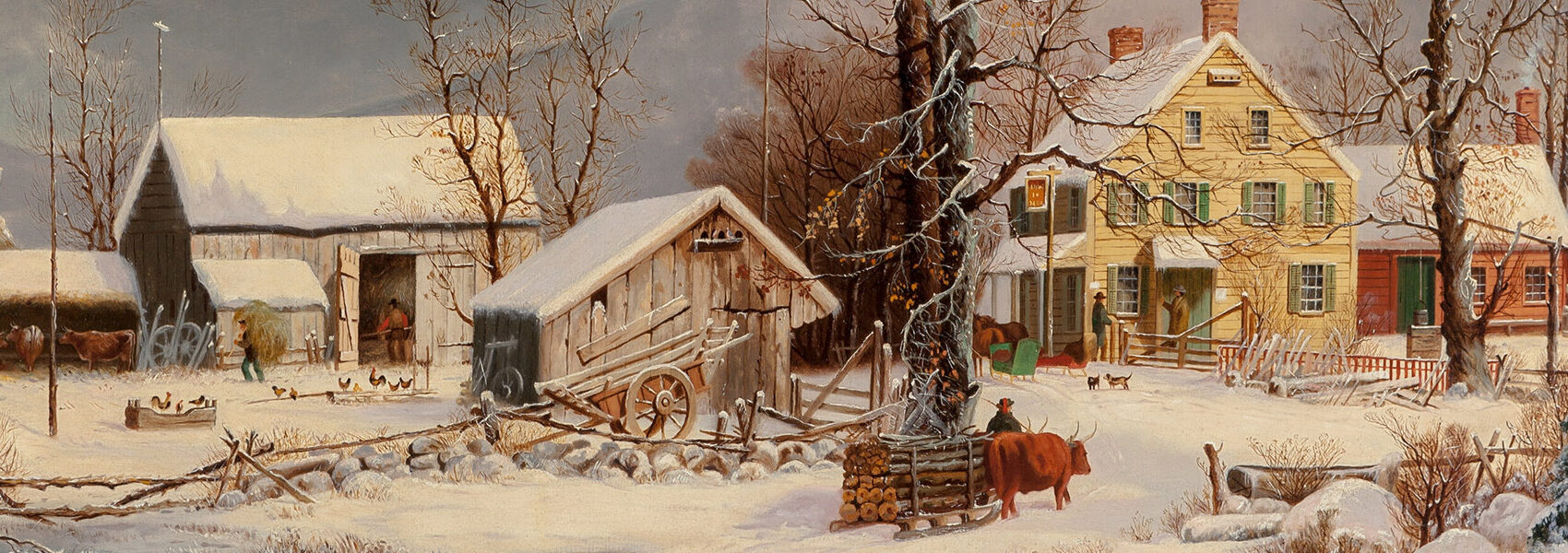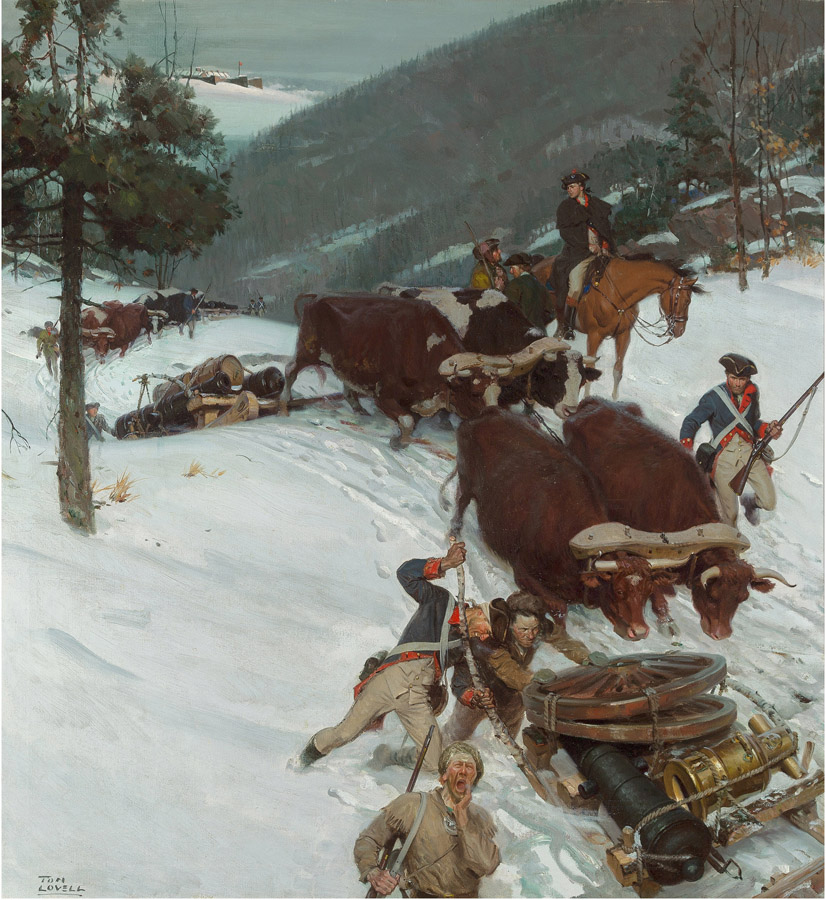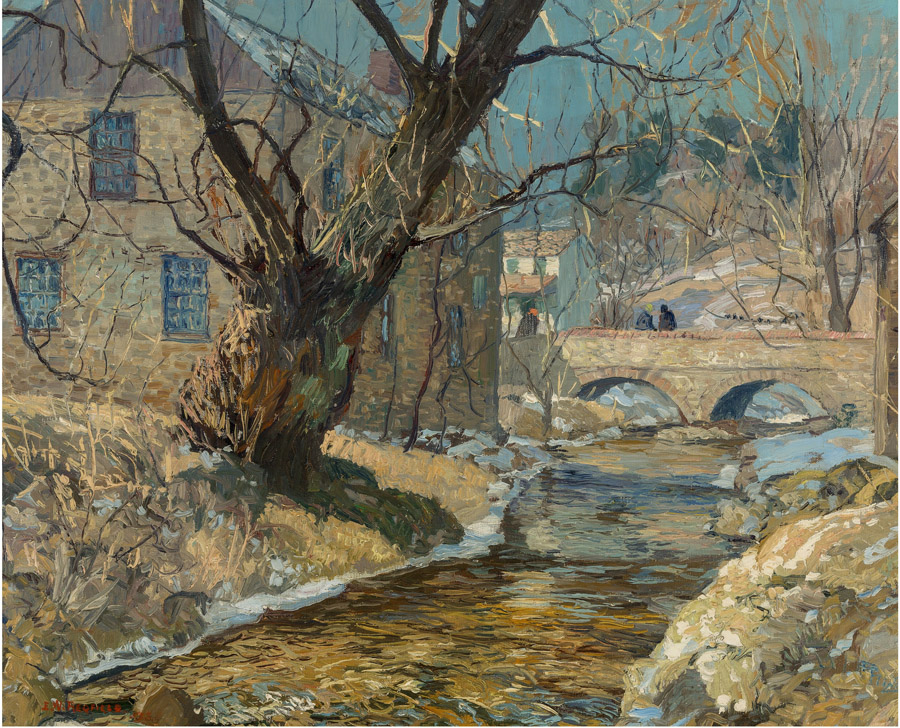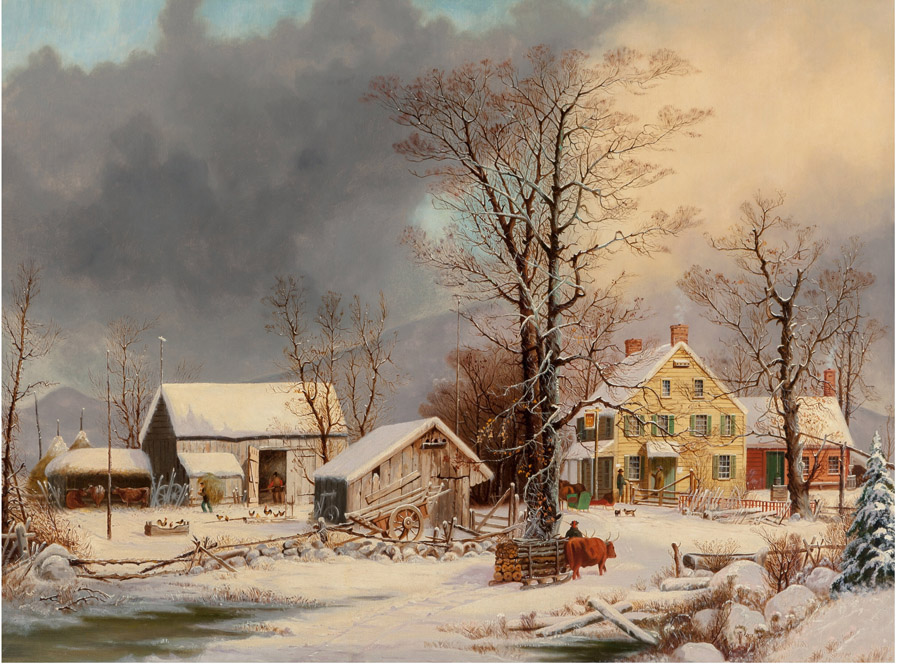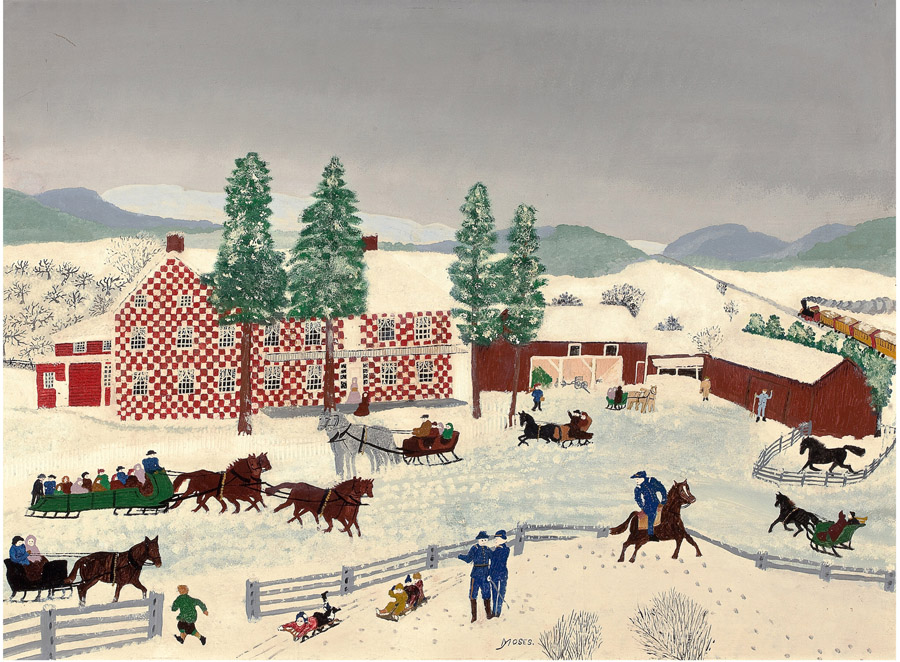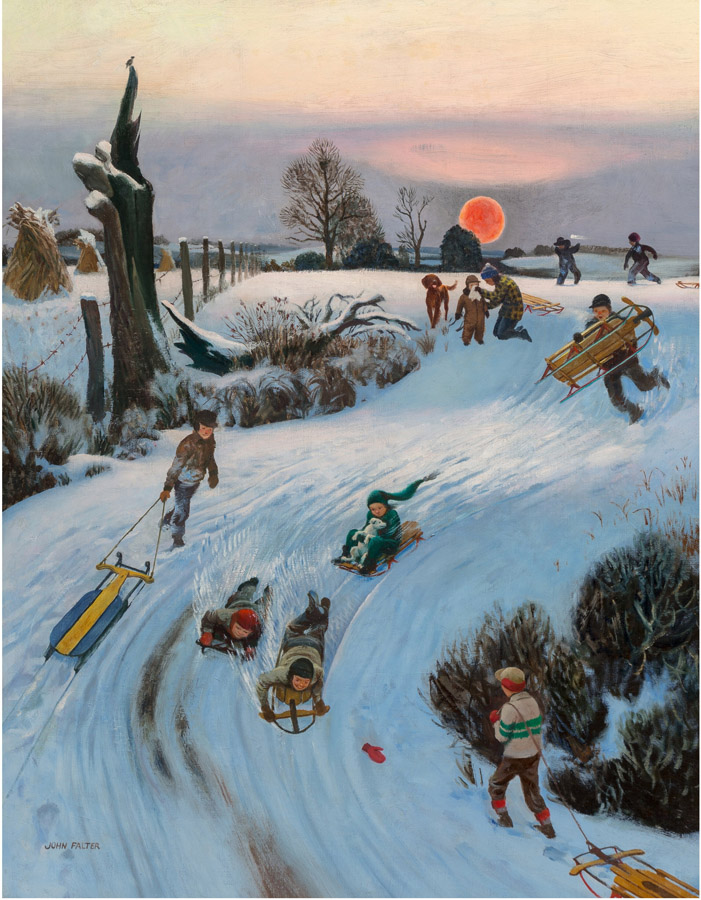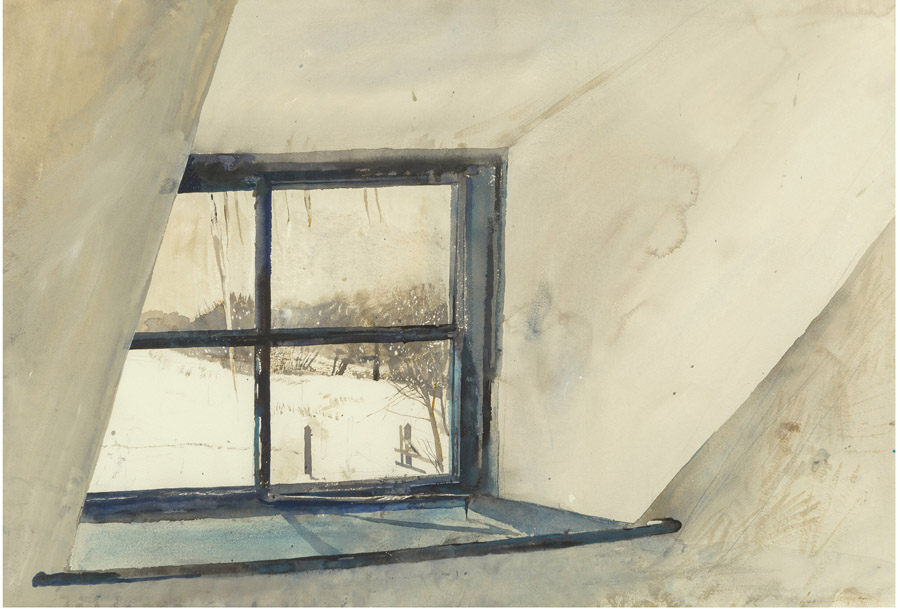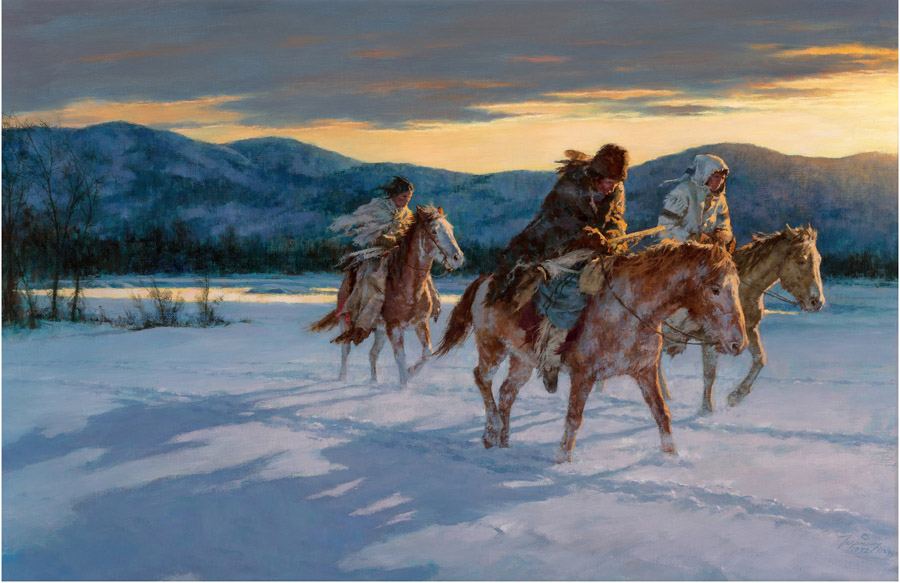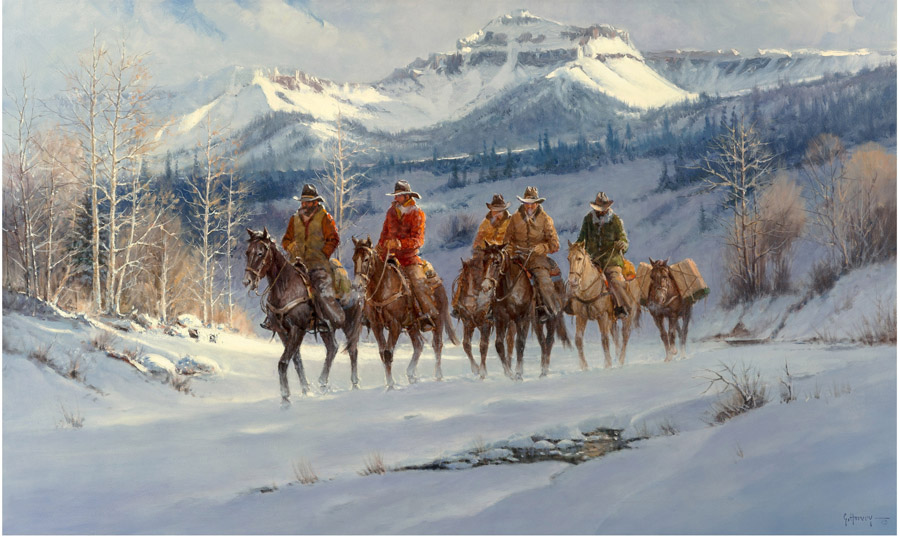THE COLDEST SEASON OF THE YEAR, AS SEEN THROUGH THE EYES OF EIGHT AMERICAN ARTISTS
From Childe Hassam’s shimmering city streets and Guy Wiggins’ snow-draped urban vignettes to Grandma Moses’ nostalgic rural landscapes, winterscapes hold a special place in the American art scene. Capturing both the quiet beauty and resilience of the season, these works transport us to moments of stillness and vitality. “What sets the American winter apart is its vast and varied terrain,” says Aviva Lehmann, Heritage Auctions’ Senior Vice President of American Art. “Whether it’s the serene, snow-covered peaks of the Catskills or the rugged, windswept expanses of the American West, each scene tells a story of our nation’s relationship with nature and the seasons and connects viewers across generations to the serenity, charm and challenges of this transformative time of year.”
In honor of the season, we’ve rounded up eight winter scenes from the Heritage archives, all by American artists and featuring American locales.
Tom Lovell, The Noble Train of Artillery, 1946
A key moment in the Revolutionary War, the Noble Train of Artillery was a feat of military logistics and engineering prowess resulting from the desperation and boldness of Continental Army Colonel Henry Knox. After the capture of Fort Ticonderoga in upstate New York, Knox moved more than 60 tons of cannons and military supplies approximately 300 miles in the middle of winter. In this work, which realized $109,375 in a July 2020 Heritage auction, Tom Lovell depicts the oxen, soldiers and buck-skinned frontiersmen who made the cold and treacherous journey over mountains, swamps and two semi-frozen rivers.
Edward Willis Redfield, The Brook at Carversville, circa 1925
Edward Redfield’s painterly views of the Delaware River basin and its surrounding scenery tapped a well of national pride in the late 19th and early 20th centuries, and his large-scale canvases depicting the rural Pennsylvania landscape rank among the finest examples of American Impressionism. In this bucolic scene, which features a winding creek flowing under the Carversville Bridge, the nearly melted snow of late winter lends a hushed serenity and hints at the springtime weather to come. The work sold for $137,500 in a November 2022 Heritage auction.
George Henry Durrie, Winter in the Country, A Cold Morning, circa 1863
Although he also painted summer landscapes, portraits and still lifes, George Henry Durrie, a lifelong resident of New Haven, Connecticut, is best known today for winter scenes romanticizing cozy seasonal pleasures in the country. In this work, which realized $324,500 in a November 2017 Heritage auction, the snowy ground and thick cloud cover provide the painting’s dominant grayish tonality, but as with most of Durrie’s winter-themed works, the scene isn’t bleak but rather filled with light and activity.
Grandma Moses, The Old Checkered House in Cambridge Valley, 1943
Born in 1860 and painting until a few months before her death in 1961, New York native Grandma Moses had a knack for capturing a simpler, bygone era. One of her most famous series of paintings featured a historic inn in Washington County near her childhood home. From 1941 to 1959, the farm wife-turned-folk artist painted more than 20 versions of the Checkered House at the center of this charming winter scene. Here, horse-drawn carriages transport guests to and from the inn while children joyfully sled across the snow-covered grounds. The painting realized $134,500 in a November 2012 Heritage auction.
John Philip Falter, Snow Day, 1948
Like Grandma Moses, John Falter opted to capture the softer side of winter in this scene he painted for the December 18, 1948, cover of The Saturday Evening Post. Between 1943 and 1971, the Nebraska native created 129 covers for the magazine, including this work featuring children sledding down a snowy hill in West Point, Pennsylvania. At the time, Falter lived next door to Kenneth Stuart, the longtime art director of The Saturday Evening Post. While neighbors, the artist bestowed the painting upon the Stuart family, where it remained until May 2019, when it sold at Heritage for $325,000.
Andrew Wyeth, Cold Spell, 1965
Andrew Wyeth’s interior scenes and architectural views often focus on windows and doorways, and Cold Spell is one of the most intimate and personal of these works. Painted as a gift for his wife, Betsy, the work depicts a winter landscape as seen through a window in the couple’s bedroom in their Chadds Ford, Pennsylvania, home. The watercolor on paper, which sold for $250,000 in a November 2019 Heritage auction, is an iconic example of Wyeth’s window scenes and was featured in the National Gallery of Art’s 2014 exhibition Andrew Wyeth: Looking Out, Looking In, a show devoted exclusively to the artist’s window-centric works.
Howard A. Terpning, Against the Cold Maker, 1992
In Against the Cold Maker, Howard Terpning masterfully depicts three North Plains Indians persevering on a journey across cold, unrelenting terrain. The details of the subjects’ winter blankets, capotes and weapons; the realistic portrayal of their physiques as they lean forward against the biting wind; and the way their horses have been packed show that Terpning is not only a great artist, but also a dedicated student of Native American history. The work realized $585,000 in a July 2020 Heritage auction.
G. Harvey, Cimarron Cowhands, 1993
Cowboys on horseback navigate the rugged winter terrain of the American West in this tour de force by Gerald Harvey Jones, better known as G. Harvey. The snow-blanketed ground and mountain peaks are still and quiet, yet Harvey captures movement and life through the icy breath of the men and their horses. The sizable painting, which measures more than 4 feet across, sold for $175,000 in a July 2020 Heritage auction.

